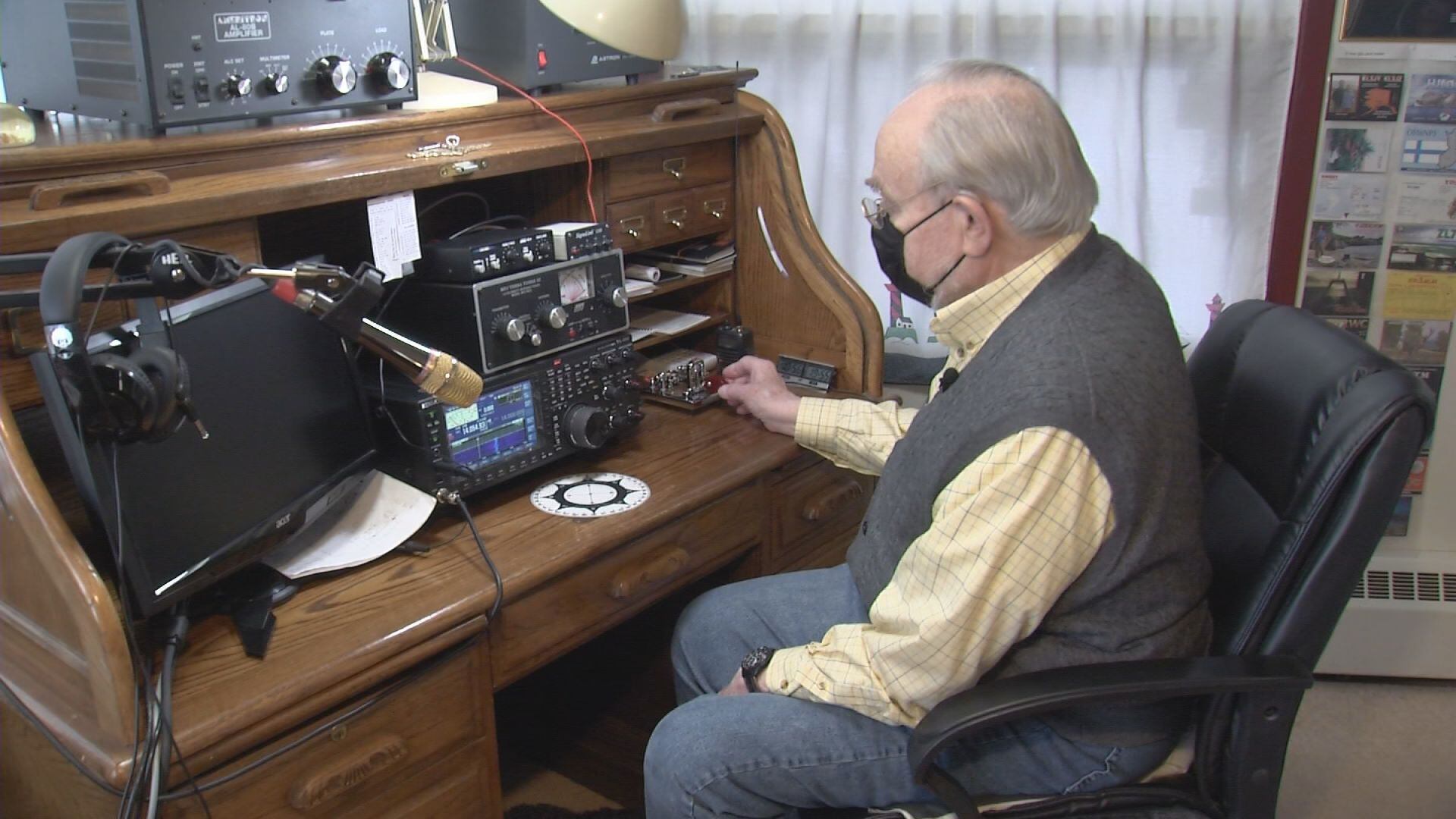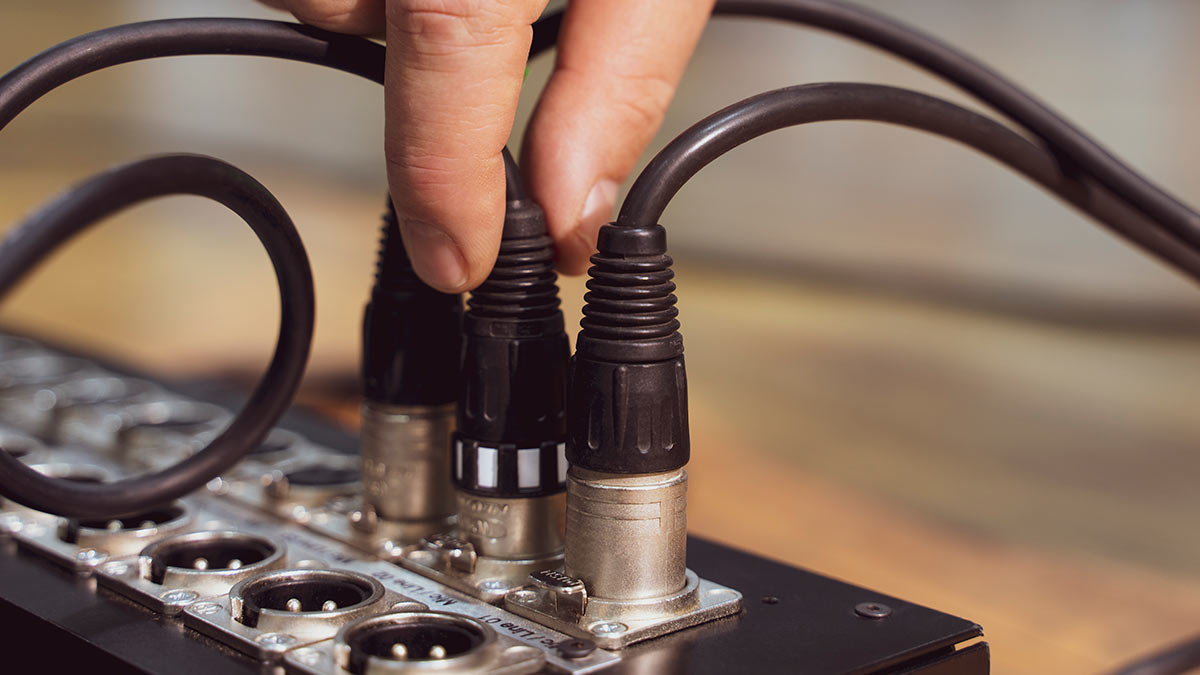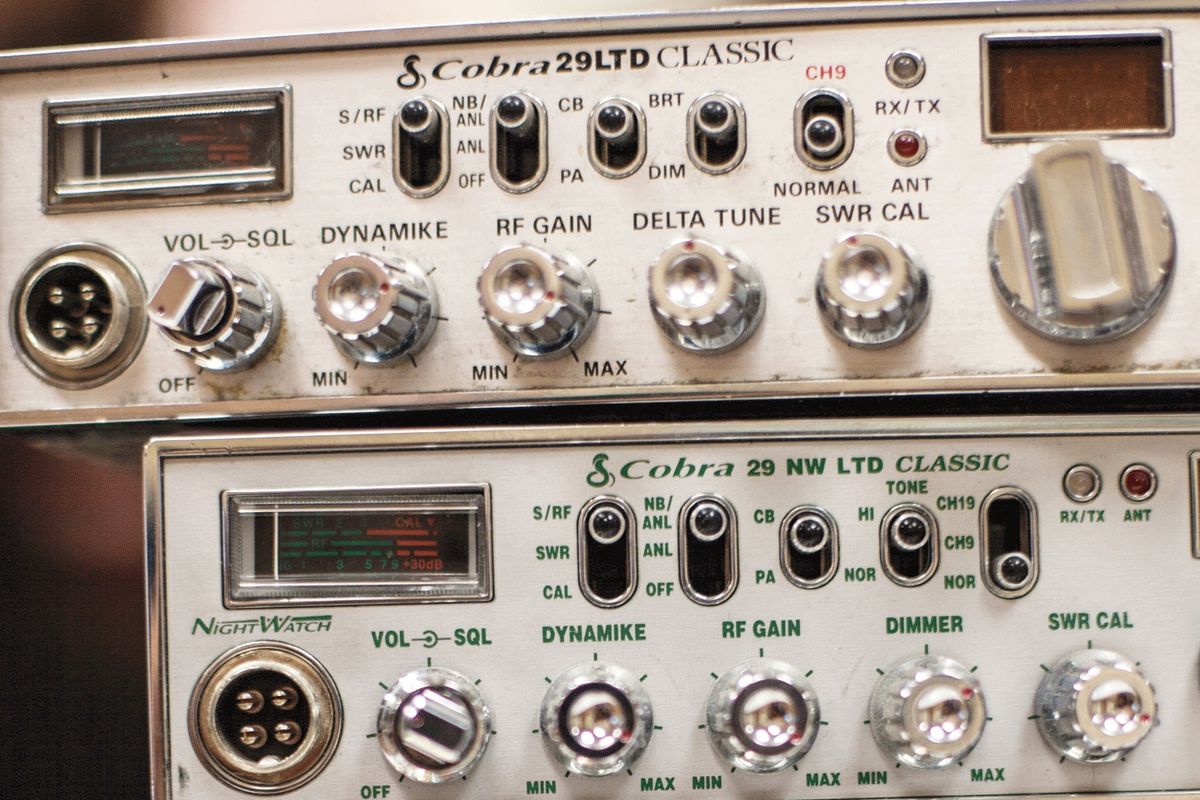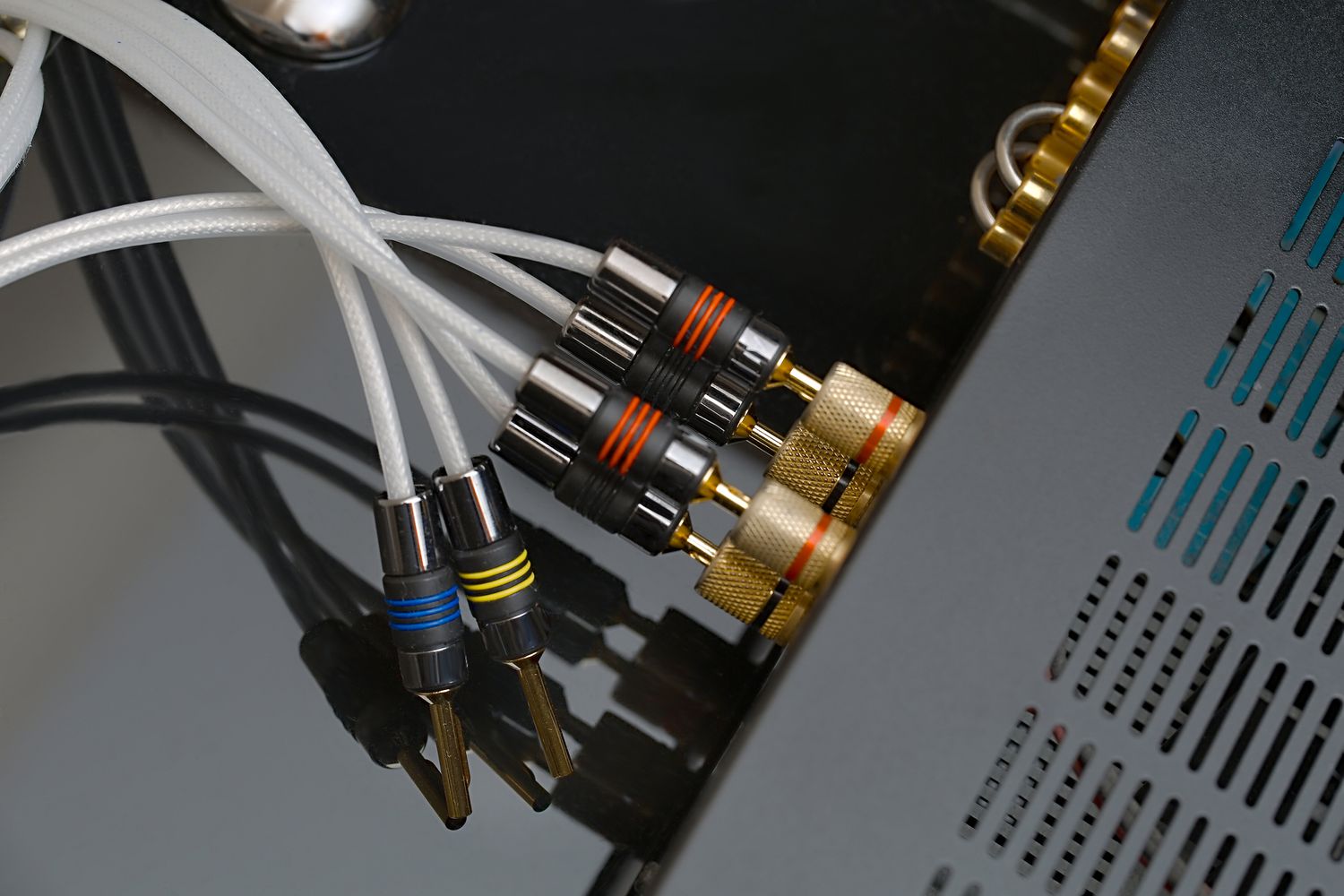Home>Production & Technology>Audio Cable>How To Set Up Virtual Audio Cable For Ham Radio


Audio Cable
How To Set Up Virtual Audio Cable For Ham Radio
Modified: January 22, 2024
Learn how to set up a virtual audio cable for your ham radio setup with this step-by-step guide. Enhance audio quality and improve communication using an audio cable for ham radio.
(Many of the links in this article redirect to a specific reviewed product. Your purchase of these products through affiliate links helps to generate commission for AudioLover.com, at no extra cost. Learn more)
Table of Contents
- Introduction
- What is a Virtual Audio Cable?
- Importance of Virtual Audio Cable in Ham Radio
- System Requirements
- Step 1: Downloading Virtual Audio Cable
- Step 2: Installing Virtual Audio Cable
- Step 3: Configuring Virtual Audio Cable
- Step 4: Setting up Virtual Audio Cable with Ham Radio Software
- Step 5: Testing the Virtual Audio Cable Setup
- Troubleshooting Common Issues
- Conclusion
Introduction
Welcome to the world of ham radio, where communication is key and audio quality plays a crucial role. Whether you’re a seasoned ham radio operator or just starting out in this exciting hobby, you understand the importance of clear and reliable audio transmission. One tool that can greatly enhance your audio experience is a Virtual Audio Cable (VAC).
In this article, we’ll explore what a Virtual Audio Cable is and how it can benefit your ham radio setup. We’ll also guide you through the process of setting up a Virtual Audio Cable for your ham radio software, ensuring optimal audio performance.
Communication in ham radio involves the transmission and reception of signals across various frequencies. While the focus is primarily on exchanging messages and information, audio quality can significantly impact the clarity and effectiveness of communication. Common issues such as background noise, signal interference, and audio distortion can hinder effective communication.
That’s where a Virtual Audio Cable comes into play. It allows you to route audio signals through virtual channels within your computer, enabling you to process and refine the sound before it is transmitted or received. This can help eliminate unwanted noise, enhance clarity, and achieve high-quality audio transmission.
Setting up a Virtual Audio Cable for your ham radio software is a relatively simple process that can greatly enhance your overall radio experience. By following a few steps and configuring the software correctly, you’ll be able to take full advantage of the benefits offered by a Virtual Audio Cable.
Now that we have a basic understanding of what a Virtual Audio Cable is and its significance in ham radio, let’s dive into the details of its setup and configuration. We’ll guide you through each step, ensuring that you have a thorough understanding of the process.
What is a Virtual Audio Cable?
A Virtual Audio Cable, often abbreviated as VAC, is a software application that enables the routing and transferring of audio signals between different software applications or devices within a computer. It creates virtual audio channels or cables that connect audio sources and destinations, allowing for the seamless transmission of audio data.
The concept of Virtual Audio Cables is similar to physical audio cables used to connect audio devices. However, instead of relying on physical connectors and wires, a Virtual Audio Cable operates within the digital realm of your computer’s operating system.
With a Virtual Audio Cable, you can route audio signals from applications like ham radio software, media players, or any other audio source to software applications that can process or play the audio. For example, you can route the audio from your ham radio software to a voice chat application or a streaming software for live broadcasting.
One of the key advantages of using a Virtual Audio Cable is its ability to create multiple virtual audio channels, allowing you to process and manipulate audio in real-time. This can be especially useful in ham radio communication, where you may need to filter out noise, adjust volume levels, or apply audio effects to enhance the clarity of your voice transmissions.
Virtual Audio Cables also offer flexibility in terms of audio format compatibility. They can handle various audio formats, including PCM, WAV, MP3, and more. This ensures that you can work with different types of audio sources and destinations without any compatibility issues.
Additionally, Virtual Audio Cables can be used for audio capture and recording purposes. You can capture audio streams from a specific software application or device and record them for later use or analysis. This can be handy for recording your ham radio transmissions or capturing audio from different software sources simultaneously.
Now that we have a clear understanding of what a Virtual Audio Cable is and its capabilities, let’s explore why it is crucial for ham radio enthusiasts and how it improves the overall audio experience in this domain.
Importance of Virtual Audio Cable in Ham Radio
Virtual Audio Cables play a vital role in enhancing the audio quality and overall experience of ham radio communication. Here are some key reasons why Virtual Audio Cables are important in the ham radio world:
- Audio Routing: Virtual Audio Cables allow you to route audio signals from your ham radio software to other applications or devices within your computer. This opens up possibilities for integrating your radio communication with voice chat applications, streaming software, or even recording software. You can easily transmit your voice over different platforms, expanding your reach and communication options.
- Audio Processing: With Virtual Audio Cables, you have the ability to process and manipulate audio signals in real-time. This means you can apply noise filters, adjust audio levels, equalize the sound, or even add effects to improve the clarity of your voice transmissions. These audio processing capabilities make a significant difference in reducing background noise and enhancing the overall audio quality received by other operators.
- Multichannel Audio: Virtual Audio Cables allow the creation of multiple virtual audio channels within your computer system. This means you can separate different audio sources and destinations, making it easier to manage and control your audio setup. For example, you can have one channel dedicated to your ham radio software, another for voice chat, and another for recording purposes. This flexibility enables you to have fine-grained control over the audio flow and ensures efficient and effective audio management.
- Recording and Analysis: Virtual Audio Cables provide the ability to capture and record audio streams from your ham radio software. This enables you to save your transmissions for later analysis, review, or documentation. You can also capture multiple audio sources simultaneously, making it easier to analyze different signals and identify any issues or areas for improvement in your communication. The recording feature provided by Virtual Audio Cables is a powerful tool for learning and improving as a ham radio operator.
- Integration with Other Software: Virtual Audio Cables allow seamless integration with other software applications used in ham radio, such as sound card digital modes, logbook programs, or signal analysis tools. This integration enhances the overall functionality of your ham radio setup and expands the possibilities of what you can do with your audio signals. It opens up avenues for experimenting with different modes, analyzing signals, and connecting with fellow operators for collaboration.
In summary, Virtual Audio Cables are important in ham radio as they provide audio routing, processing capabilities, multichannel support, recording and analysis features, and seamless integration with other software applications. Incorporating a Virtual Audio Cable into your ham radio setup can make a significant difference in the quality of your audio transmissions and enhance your overall communication experience.
System Requirements
Before getting started with setting up a Virtual Audio Cable for your ham radio, it’s essential to ensure that your computer meets the necessary system requirements. Here are the basic requirements for using a Virtual Audio Cable:
- Operating System: Virtual Audio Cables are compatible with various operating systems, including Windows, macOS, and Linux. Make sure to check the compatibility of the specific Virtual Audio Cable software you plan to use with your operating system.
- Processor and RAM: A decent processor and sufficient RAM are essential for running Virtual Audio Cable software smoothly. While the specific hardware requirements may vary depending on the software, it is generally recommended to have at least a dual-core processor and 4GB of RAM for optimal performance.
- Audio Interface: To connect your ham radio equipment to your computer, you will need an audio interface. This can be an external USB sound card or an internal sound card installed in your computer. Ensure that your audio interface supports the necessary input and output channels required for your ham radio setup.
- Ham Radio Software: To fully utilize a Virtual Audio Cable, you will need ham radio software that supports audio routing. Most popular ham radio software, such as WSJT-X, Ham Radio Deluxe, or FLdigi, are compatible with Virtual Audio Cables.
- Internet Connection: While not directly related to the Virtual Audio Cable itself, having a stable internet connection is beneficial if you plan to integrate your ham radio communication with online services, streaming platforms, or voice chat applications.
It’s important to note that each Virtual Audio Cable software may have its own specific system requirements. Therefore, it’s recommended to check the software documentation or the website of the Virtual Audio Cable you choose to ensure compatibility with your computer setup.
Once you have confirmed that your computer meets the system requirements, you can proceed to download and install the Virtual Audio Cable software. In the next section, we will guide you through the process of downloading and installing the Virtual Audio Cable on your computer.
Step 1: Downloading Virtual Audio Cable
In order to set up a Virtual Audio Cable for your ham radio, the first step is to download the Virtual Audio Cable software. There are several Virtual Audio Cable options available, such as Virtual Audio Cable by Eugene Muzychenko or VB-Audio Virtual Cable. Here’s how you can download the software:
- Research and Choose a Virtual Audio Cable: Start by researching different Virtual Audio Cable options available and choose the one that best suits your needs. Consider factors such as compatibility with your operating system, features, and user reviews.
- Visit the Official Website: Once you have chosen the Virtual Audio Cable software you want to use, visit the official website of the software. Most Virtual Audio Cable software providers have their own websites where you can download the software.
- Access the Downloads Section: Look for a “Downloads” or “Download” section on the website. This is where you will find the download links for the Virtual Audio Cable software.
- Select the Correct Version: Make sure to choose the correct version of the Virtual Audio Cable software for your operating system. Some software may offer different versions for Windows, macOS, or Linux.
- Download the Software: Click on the download link to start the download process. The file size may vary depending on the Virtual Audio Cable software you are downloading. It is recommended to save the downloaded file to a location on your computer that is easily accessible.
After downloading the Virtual Audio Cable software, you are ready to move on to the next step: installing the software on your computer. In the following section, we will guide you through the installation process of the Virtual Audio Cable software.
Step 2: Installing Virtual Audio Cable
Now that you have downloaded the Virtual Audio Cable software, it’s time to install it on your computer. Follow these steps to install the software:
- Locate the Downloaded File: Navigate to the location where you saved the downloaded file of the Virtual Audio Cable software.
- Run the Installer: Double-click on the downloaded file to run the installer. This will initiate the installation process.
- Follow the Installation Wizard: The installation process typically involves an installation wizard that will guide you through the necessary steps. Follow the instructions provided by the wizard to proceed with the installation.
- Choose the Installation Location: The installer may give you the option to choose the installation location on your computer. You can either use the default location or specify a different directory.
- Accept the License Agreement: Read the license agreement carefully and if you agree to the terms, click on the “I Agree” or “Accept” button to proceed with the installation.
- Select Components (If Applicable): Depending on the Virtual Audio Cable software, you may be given the option to select specific components or features to install. Choose the components that are relevant to your needs or leave the default selection as it is.
- Start the Installation: Once you have customized the installation settings (if applicable), click on the “Install” or “Next” button to start the installation process.
- Wait for the Installation to Complete: The installer will now begin installing the Virtual Audio Cable software on your computer. Wait for the installation process to complete. This may take a few moments.
- Finish the Installation: Once the installation is complete, you will see a notification or prompt indicating that the installation has finished. Click on the “Finish” or “Close” button to complete the installation process.
After successfully installing the Virtual Audio Cable software, you are ready to proceed to the next step: configuring the Virtual Audio Cable for your ham radio software. In the following section, we will guide you through the process of configuring the Virtual Audio Cable.
Step 3: Configuring Virtual Audio Cable
After installing the Virtual Audio Cable software, it’s time to configure it to work with your ham radio software. Follow these steps to configure the Virtual Audio Cable:
- Open the Virtual Audio Cable Software: Locate the Virtual Audio Cable software on your computer, usually through the Start menu or desktop shortcut, and open it.
- Set the Number of Cables: Virtual Audio Cable software allows you to create multiple virtual audio cables. Determine the number of cables you need for your setup, keeping in mind the specific requirements of your ham radio software and any other applications you want to integrate with.
- Configure Cable Properties: Within the Virtual Audio Cable software, you can configure the properties of each cable. This includes setting the sample rate, bit depth, and other audio parameters. Ensure that the settings match the requirements of your ham radio software and other applications you plan to use.
- Test the Cables: Some Virtual Audio Cable software provides a testing feature to check the functionality of the created virtual audio cables. Use this feature to test the audio flow and ensure that the cables are working correctly.
- Adjust Buffer Settings (If Necessary): Depending on your computer’s performance and the specific requirements of your ham radio software, you may need to adjust the buffer settings within the Virtual Audio Cable software. Lower buffer settings result in lower latency but require more processing power.
- Save and Apply the Configuration: Once you have made the necessary configurations and adjustments, save the settings within the Virtual Audio Cable software and apply them.
Configuring the Virtual Audio Cable is a crucial step in ensuring that it works seamlessly with your ham radio software. Take the time to understand the specific requirements of your software and make the necessary configurations within the Virtual Audio Cable software.
With the Virtual Audio Cable successfully configured, you are now ready to move on to the next step: setting up the Virtual Audio Cable with your ham radio software. In the following section, we will guide you through this process.
Step 4: Setting up Virtual Audio Cable with Ham Radio Software
Now that you have configured the Virtual Audio Cable, it’s time to integrate it with your ham radio software. Follow these steps to set up the Virtual Audio Cable with your ham radio software:
- Open Your Ham Radio Software: Launch your ham radio software on your computer.
- Access Audio Settings: Look for the audio settings or preferences section within your ham radio software. This is where you will configure the audio input and output devices.
- Select the Virtual Audio Cable: In the audio settings, select the Virtual Audio Cable as the audio input and output device for your ham radio software. The Virtual Audio Cable may appear as a separate audio device or with a specific name depending on the software.
- Configure Sample Rate and Bit Depth: Ensure that the sample rate and bit depth settings in your ham radio software match the settings configured in the Virtual Audio Cable software. Consistency in these audio parameters is crucial for proper audio routing and to avoid any distortion or compatibility issues.
- Adjust Audio Levels: Use the audio level controls within your ham radio software to set the appropriate levels for proper audio transmission and reception. Adjust the levels to prevent audio distortion and to achieve clear and balanced audio signals.
- Test the Setup: Once you have completed the settings, initiate a test transmission and verify that the audio is successfully routed through the Virtual Audio Cable. Listen for clarity, check for any audio latency, and ensure the integration is functioning as expected.
- Make Further Adjustments: Depending on your specific needs and preferences, you may need to make further adjustments to the audio settings within your ham radio software. This includes any additional audio processing, equalization, or routing configurations.
Setting up the Virtual Audio Cable with your ham radio software is crucial for utilizing the benefits of the Virtual Audio Cable in your communication. Take the time to understand the audio settings in your software and properly integrate the Virtual Audio Cable for optimal performance.
With the Virtual Audio Cable successfully set up with your ham radio software, you are ready to move on to the next step: testing the Virtual Audio Cable setup. In the following section, we will guide you through the process of testing the setup to ensure everything is working correctly.
Step 5: Testing the Virtual Audio Cable Setup
After setting up the Virtual Audio Cable with your ham radio software, it’s important to test the setup to ensure that everything is working correctly. Follow these steps to test your Virtual Audio Cable setup:
- Initiate a Test Transmission: Start by initiating a test transmission from your ham radio setup. This can be done by broadcasting a test message or engaging in a conversation with another operator.
- Monitor Audio Quality: Pay close attention to the audio quality of your transmission. Listen for any distortions, background noise, or unusual audio artifacts. Verify that the audio is clear, intelligible, and free from any issues that could affect communication.
- Check for Latency: Determine if there is any noticeable audio delay or latency between your speech and the output on the receiving end. Ideally, there should be minimal latency to ensure smooth and natural communication.
- Make Necessary Adjustments: If you encounter any issues during the test, such as audio distortion, latency, or poor audio quality, go back to the settings of your Virtual Audio Cable and ham radio software. Make the necessary adjustments, such as adjusting buffer sizes, audio levels, or software configurations, to optimize the audio performance.
- Repeat the Test: After making adjustments, repeat the test transmission to evaluate the impact of the changes. Continue adjusting and testing until you achieve satisfactory audio quality and performance.
- Engage in Real-World Communication: Once you are confident that the Virtual Audio Cable setup is functioning as desired, engage in real-world communication with other ham radio operators. Use this opportunity to assess the effectiveness of the setup in real-time communication scenarios, and make any additional adjustments if necessary.
Testing the Virtual Audio Cable setup ensures that the audio routing and configuration are optimized for clear and reliable communication. By conducting thorough tests, you can identify and resolve any issues or optimize settings to enhance the overall audio performance of your ham radio system.
Congratulations! You have successfully set up and tested the Virtual Audio Cable for your ham radio setup. In the following section, we will discuss some common issues you may encounter and provide troubleshooting tips to overcome them.
Troubleshooting Common Issues
While setting up and using a Virtual Audio Cable with your ham radio software, you may encounter some common issues. Here are a few troubleshooting tips to help you address these issues:
- No Audio Output or Input: If you are not getting any audio output or input through the Virtual Audio Cable, first check the audio settings in both the Virtual Audio Cable software and your ham radio software. Ensure that the Virtual Audio Cable is selected as the audio input and output device. Also, verify that the audio levels are properly configured and not muted.
- Audio Distortion: If you experience audio distortion, such as crackling or popping sounds, try adjusting the buffer size within the Virtual Audio Cable software. Increasing the buffer size can help reduce audio distortion. Additionally, ensure that the sample rate and bit depth settings in your ham radio software are consistent with the Virtual Audio Cable settings.
- Audio Latency: If you notice significant audio latency or delay between your speech and the output, consider reducing the buffer size within the Virtual Audio Cable software. However, be cautious as lowering the buffer size too much may result in audio artifacts or reduced performance.
- Conflicts with Other Applications: Sometimes, conflicts may arise if there are multiple applications using the same audio devices or if other software is interfering with the Virtual Audio Cable setup. Try closing or disabling other audio-related applications or services running in the background to resolve these conflicts.
- Compatibility Issues: Ensure that the Virtual Audio Cable software and your ham radio software are compatible with each other and with your operating system. Check for any software updates or patches that may resolve compatibility issues.
- Driver Issues: If you are experiencing persistent issues, it may be related to outdated or incompatible audio drivers. Ensure that you have the latest audio drivers installed for your sound card or audio interface. Visit the manufacturer’s website to download and install the latest driver updates.
If you continue to experience issues even after trying these troubleshooting steps, consult the documentation or support resources provided by the Virtual Audio Cable software or your ham radio software. They may have additional specific solutions or suggestions to address the problems you are encountering.
Remember, troubleshooting can be a process of trial and error. Take your time to investigate the issue and try different steps to resolve it. With patience and persistence, you will be able to overcome common issues and optimize your Virtual Audio Cable setup for smooth and effective ham radio communication.
Now that you are equipped with troubleshooting knowledge, you are ready to enjoy the benefits of a properly configured Virtual Audio Cable in your ham radio setup.
Conclusion
A Virtual Audio Cable can greatly enhance your ham radio experience by improving the audio quality, enabling audio routing, and providing flexibility in integration with other software applications. Setting up and configuring a Virtual Audio Cable for your ham radio software is relatively straightforward and can be done by following a few simple steps.
In this article, we started by introducing the concept of a Virtual Audio Cable and its importance in ham radio communication. We discussed the system requirements to ensure compatibility with your computer setup. Then, we walked through the step-by-step process of downloading, installing, configuring, and testing the Virtual Audio Cable setup.
By integrating a Virtual Audio Cable with your ham radio software, you can take advantage of features such as audio routing, audio processing, multichannel support, recording capabilities, and seamless integration with other software applications. These features help optimize your audio transmissions, enhance communication quality, and expand the capabilities of your ham radio setup.
However, it’s important to keep in mind that troubleshooting may be necessary during the setup process. We provided some common issues and troubleshooting tips to help you overcome any challenges that may arise.
With a properly configured Virtual Audio Cable and a seamless integration with your ham radio software, you can enjoy clear, reliable, and high-quality audio transmissions. The Virtual Audio Cable opens up new possibilities for communication, collaboration, and customization within the realm of ham radio.
Remember, practice and experimentation go hand in hand with setting up and utilizing a Virtual Audio Cable. Explore different settings, test various configurations, and adapt the setup to meet your specific needs and preferences. This will allow you to tailor your ham radio communication to your liking and further enhance your overall experience.
So, go ahead, download and set up a Virtual Audio Cable for your ham radio, and unlock the full potential of clear and high-quality audio transmission in your communication endeavors!











